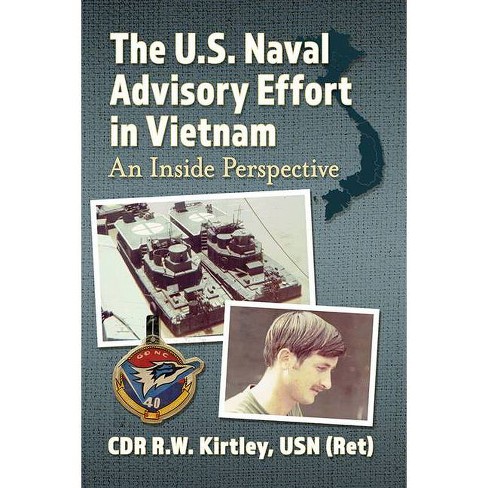
Mayday: A Saga of the Big Mothers (322 pp. $28.99, hardcover; $18.99, paper; $7.99, Kindle) chronicles the exploits of Helicopter Anti-Submarine Squadron Six (HS-6), which performed mainly water combat search and rescue missions of downed pilots and crew members in the Vietnam War. Each HS unit was comprised of one helicopter and four Navy crewmembers – a veteran pilot, a junior officer, and two enlisted crewmen. JW (Jimmy) Jones was a crewmember during his two Vietnam War tours.
Since the North Vietnamese did not have submarines, HS-6 crews were repurposed to fulfill other needs. The book relates Jones’ unit’s scores of missions, some successful and some not, but most of which were under fire with a helicopter that was too big and too slow, with weapons and hoists that jammed or malfunctioned frequently, with minimum weapons training, but always with courage and a sense of purpose.
In a typical Vietnam War sea rescue scenario, a U.S. plane would be shot down or crash over North Vietnamese waters. There would be a Mayday distress call. A flotilla of sampans would make a beeline for the downed plane because the NVA offered a reward of gold for the capture of a U.S. airman. The Mother helicopter would fly from a Navy carrier to the downed airmen, hover over him, drop a hoist, and pick him up.
It did so usually under intense fire, while at the same time the helicopter and American planes would fire on the sampans to keep them away from the downed airman.
Sometimes the sampans got there first. Sometimes the helicopter did and all rescued would receive deserved medals. Sometimes a downed airman couldn’t get on the hoist and one of the Mother’s crew would jump in the water to help him. Each of the scores of rescues in the book is dramatic, whether successful or not.
Occasionally, the unit had other duties. That included being part of a Presidential Summit in the Philippines, in Operation Formation Star, one of the largest redeployments in naval history, and in the aftermath of a collision between an American destroyer and an Australian light carrier.
I have a few quibbles with the book. For one, Jones doesn’t bother much with character development, except for a few people in the last chapter. Many sailors are only described by name, rank, position and the medals they won. Also, the prose is mainly Navyspeak and is somewhat inaccessible to those of us who weren’t in the Navy, despite a helpful glossary.
On the plus side, Johnny Jones emphasizes the bond between war buddies, particularly in the final chapter when he describes crew reunions. In fact, Jones feels sorry for those who avoided the draft and fled to Canada because they never had the opportunity to bond with their fellow countrymen in a way that only warriors know.
–Harvey Weiner







 In 351 Days in Da Nang: Memories of a Navy Investigator (CreateSpace, 116 pp., $23.75, paper) Ray Norton tells us he never says he “fought in Viet Nam (because I didn’t). I do say I was stationed in Da Nang or land based with the Navy in Da Nang.” Norton, in fact, served as a security guard and Naval Support Activity (NSA) investigator. “Just because you are in the Navy,” he goes on to say, “does not mean you were on a ship.”
In 351 Days in Da Nang: Memories of a Navy Investigator (CreateSpace, 116 pp., $23.75, paper) Ray Norton tells us he never says he “fought in Viet Nam (because I didn’t). I do say I was stationed in Da Nang or land based with the Navy in Da Nang.” Norton, in fact, served as a security guard and Naval Support Activity (NSA) investigator. “Just because you are in the Navy,” he goes on to say, “does not mean you were on a ship.” At Monkey Mountain. The author is on the left.
At Monkey Mountain. The author is on the left.

